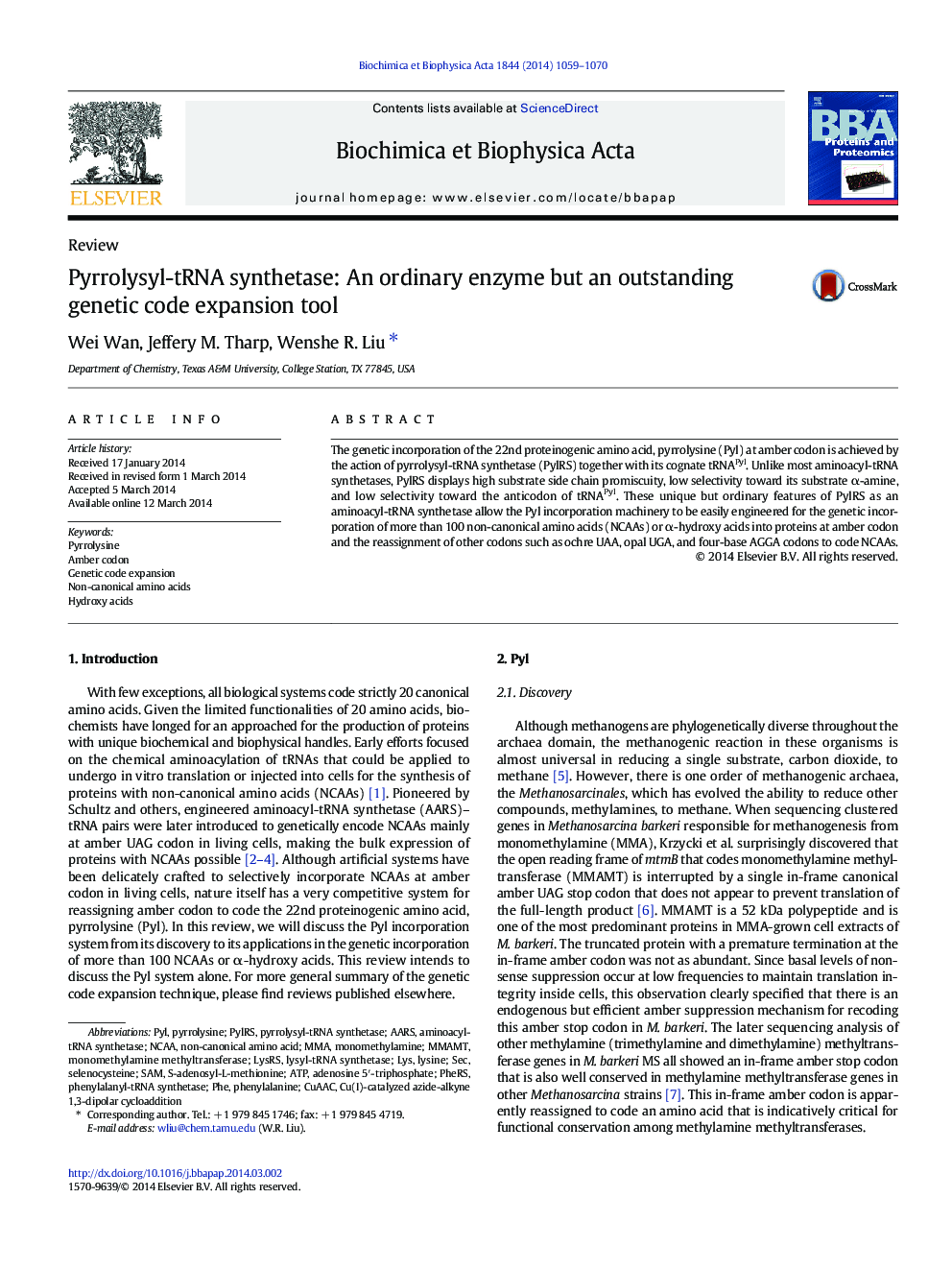| Article ID | Journal | Published Year | Pages | File Type |
|---|---|---|---|---|
| 1179618 | Biochimica et Biophysica Acta (BBA) - Proteins and Proteomics | 2014 | 12 Pages |
•PylRS has high substrate side chain promiscuity.•PylRS has high substrate α-substituent promiscuity.•PylRS doesn't specifically recognize its tRNA anticodon.•Using the Pyl system, 100 non-canonical amino acids or α-hydroxy acids are encoded.•Using the Pyl system, amber, opal, ochre, and AGGA codons are reassigned.
The genetic incorporation of the 22nd proteinogenic amino acid, pyrrolysine (Pyl) at amber codon is achieved by the action of pyrrolysyl-tRNA synthetase (PylRS) together with its cognate tRNAPyl. Unlike most aminoacyl-tRNA synthetases, PylRS displays high substrate side chain promiscuity, low selectivity toward its substrate α-amine, and low selectivity toward the anticodon of tRNAPyl. These unique but ordinary features of PylRS as an aminoacyl-tRNA synthetase allow the Pyl incorporation machinery to be easily engineered for the genetic incorporation of more than 100 non-canonical amino acids (NCAAs) or α-hydroxy acids into proteins at amber codon and the reassignment of other codons such as ochre UAA, opal UGA, and four-base AGGA codons to code NCAAs.
